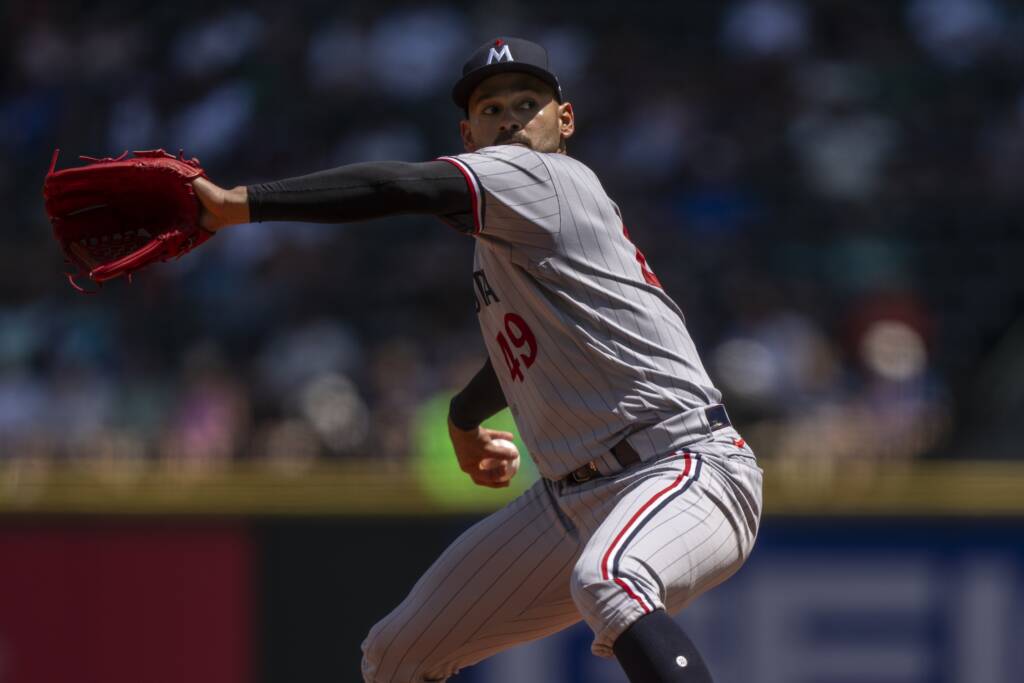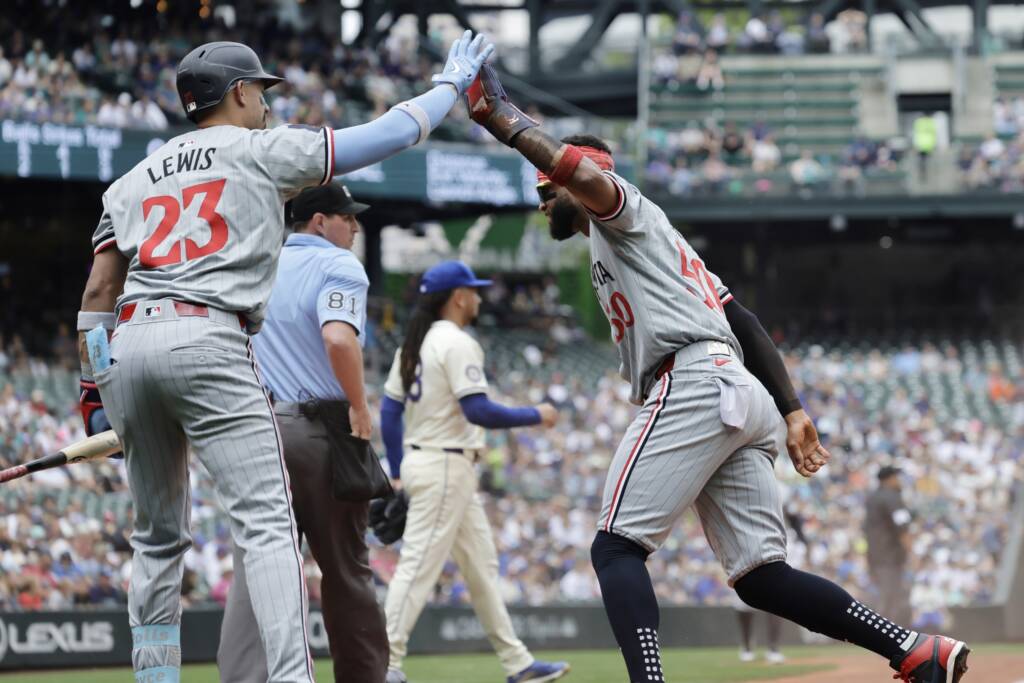Calling the blockbuster trade that the Minnesota Twins made in January bold would be an understatement. The team swapped their best contact hitter Luis Arraez to the Miami Marlins for starting pitcher Pablo López. Arraez was the reigning AL Batting Champion and the most beloved player at the time. Getting López bolstered Minnesota’s rotation, giving it the most depth it has ever had. But considering that they traded Arraez, fans immediately had high expectations for López.
López has a 3.99 career ERA, but he put together a solid first half in his debut season with the Twins. The team’s Opening Day starter only had a 5-5 record in 111 innings, while his 138 strikeouts were second in the American League at the midseason point. His 3.89 ERA at the break was good but not great. However, his underlying 3.18 FIP and .218 opponent batting average suggested that his pitching was even better than the ERA suggested. López’s first-half performance still earned him his first career All-Star selection, and he joined Arraez in Seattle for the festivities.
Arraez went from being a cult hero in Minnesota to a folk hero in Miami. The former batting champion is likely going to run away and hide to win the NL batting title. He has a .379 batting average and was flirting with a .400 average as late as June. A large number of Twins fans haven’t forgotten their favorite head-shaking hitter.
It is kind of poetic in a way. Minnesota and Miami had strengths in one area and deficiencies in another. So both teams traded away from depth to acquire them with talented players with their biggest inefficiency being identical in their second-half regressions. Arraez and Lopez are good players at their positions. However each of them tend to start off with a solid first half of the season but then their production tends to noticeably decline in the second half of the season. To make things easy, let’s say the halfway point of the season is the All-Star break.
For those who point to López’s second-half struggles, look at Arraez in the second half through his career. His .349 average in the first half is as close as someone this era can get to Tony Gwynn. But in the second half it drops to a good but not great .301 average. It’s not just the dip that is similar but also why it happens in the first place. Both Arraez and López have slowed down due to nagging injuries in the second half of seasons. Arraez has 258 games played in the first half with 194 games in the second half.
In his six-season career, López has been most productive in the first half of the season. Using the All-Star break as the halfway point, López has a 3.58 career ERA with a 9.6 K/9 clip in 409.2 innings pitched in the first half. The second half is a different story. He’s regressed to a 5.14 ERA and 7.9 K/9 in 164.2 innings during the second half of the season. López also has made twice as many career starts in the first half of the season as in the second.
The struggles that come in the second half have prevented López from reaching his full ace potential. Part of the issue is health. In 2021, López missed the entire second half due to an injured rotator cuff. However, it’s not always missing time on the injured list; the general grind of a 162-game season can wear on a starting pitcher. In 2022, López had a 2.86 ERA and an 8.74 K/9 in 18 starts and 104 innings pitched in the first half of last season. Then in the second half, his 4.97 ERA in 76 innings soured a solid start to the season.
There are a few different ways to look at fixing López’s second-half struggles. One is having him stay healthy, which is pretty much out of everyone’s control. Another is potentially limiting how many innings López pitches to try and keep him as fresh as possible for later in the season. But with the Twins having pitched the most innings per start and a bullpen that is good but not great, that doesn’t seem ideal, either.
López may also avoid a swoon because he’s worked with Minnesota’s pitching coaches to rework his repertoire. Like in the second half of 2022, his fastball velocity has increased in his first two second-half starts this year. However, he’s also increased his fastball usage, which could allow hitters more of an opportunity to hit off the righty. In Miami, López was a fastball/changeup pitcher. But the Twins have helped him develop secondary pitches like his nasty sweeper in addition to slightly more production from his cutter and curveball.
There is no magical date or time period that automatically makes a pitcher regress. It’s not like López forgets how to pitch during the All-Star Break. López’s first two starts in the second half this year have been below his overall production this year. His first two starts were on the road in Oakland and Seattle, where he allowed a combined 9 runs in 10.2 innings with 14 strikeouts and three home runs allowed. Then again, he did also bounce back with a solid start. López held the Seattle Mariners to only two runs over 7 innings Tuesday night.
The second-half dip likely isn’t something the Twins were all too concerned about overall. However, it’s something that can’t linger throughout his career. López signed a three-year extension with the Twins in April, and if he works out his second-half issues, he can become a true ace. Doing so will lessen the need to compare him to Arraez. Also, there is a good chance that Minnesota is playing postseason baseball this year. They will need López at his best to make a run in October.
Arraez’s drop from the first of last year to the second half has to be part of the reason the Twins were comfortable trading him. Arraez won the batting title with only a .313 average despite having a .360 average in late June of 2022.
The Twins have the top of the rotation arm they were looking for in López. However, he can move into true ace territory by matching his first-half production in the second half of the season. If López pitches like an All-Star all season, he can become a force at the top of an already impactful starting rotation.


